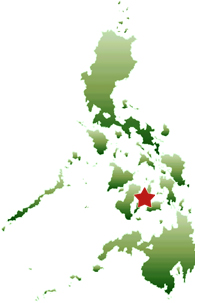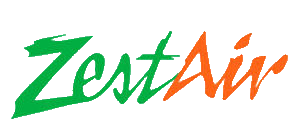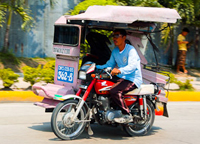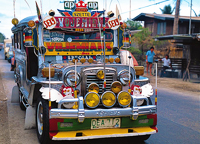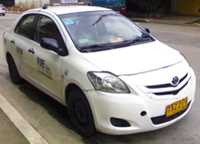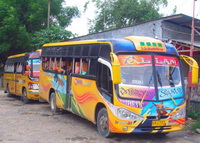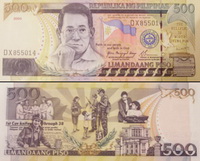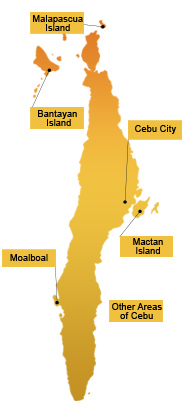General Info
Cebu stands as the country's top business and tourist destination. Crowned as the Queen City of the South, it is here where business and leisure breathe together with office buildings and beach resorts finding its own place under Cebu's friendly skies.
Cebu is subdivided into 6 component cities and 47 municipalities. With its 6 cities; Cebu, Danao, Lapu-Lapu, Mandaue, Toledo and Talisay; and its 47 smaller towns, Cebu has more than kept pace with the nation's progress. Recent indications pointed out that Cebu has become the country's favorite tourist destination. In contrast to the bustling metropolis, the rest of Cebu’s 167 islets and islands are lined with idyllic white sandy beaches and pristine clear waters. Cebu has gained wide popularity for fantastic diving grounds evidenced by the proliferation of resorts which offer luxurious accommodations. Cebu's strategic location makes it ideal for those who wish to travel to the other islands and provinces by plan, boat or bus. No place could be too far from Cebu.
As the oldest city in the Philippines, its past is also firmly entrenched in the annals of the Spanish conquest. A handful of historical remnants recall those missionary days - Magellan’s cross and the Basilica Minore del Santo Niño.
The sightseeing options at Cebu are absolutely endless.
Geography
Cebu is located in Central Visayas (Region 7) and the center of Philippine archipelago with a total land area of 5,000 square kilometers. Situated to the east of Negros, on the southeast by Bohol and directly to the west is Leyte. In between Cebu and Bohol is the Bohol Strait, while Tanon Strait lies alongside Cebu and Negros.
Cebu is composed of several islands including Sumilon Island, Mactan Islands, Olango Island, Camotes Islands, Malapascua Island, and Bantayan Islands. Some of the hundreds of islands surrounding Cebu are uninhabited.
Beaches, coral atolls, laudable diving spots in Moalboal, rich fishing grounds and famous islands such as Mactan Island, Malapascua Island and Bantayan lsland surround and embody Cebu. Its central location, is proximity to unusually exotic tourist destination, ready access to a diversity of plant, animal and geological wonders within the island, and remoteness from earthquake and typhoon activity are some of the special attributes which help maintain Cebu's track record. Exposure to nature's wonders allows busy families to recharge their batteries and relax.
Cebu has an abundance of beauty. From the central mountains to the coral sands, the island is a natural wonder. Most of the archipelago's 8,120 species of flowering plants can be found in Cebu. 5,832 are unique to the country. Birds migrating from Russia stop enroute to Australia at the Olango Bird Sanctuary.
Weather
Amihan - High Season
September/October to May/June
25-32°C (78-90°F)
Hot and humid, Northeasterly to Easterly winds, little or no rainfallPhilippines Summer
April / May / June
28 – 38 degrees C
Hot and mostly dry
Sometimes Easterly to southeasterly Trade windsHabagat - Low Season
May/June to September/October
25-32°C (78-90°F)
Cool south-west wind, moderate to heavy rainfall
Tourist Season
The Low Season is when the winds change and blow eastward into White Beach. There is more rain than usual, but there are also fewer tourists, better prices on accommodations, and other lower prices. The low season begins in May, and ends in October.
During High Season, the winds come from the other side of the island, and White Beach is protected. The wind blows out to sea, leaving the beach pristinely clean and generally calm. It is also winter in the northern hemisphere, and tourists come in numbers in search of sun, heat, beach and party. High Season starts in October and ends in May.
The Peak Season is when the tourists are at their height. This includes Christmas, New Year, Chinese New Year, and Holy Week (Easter Week). Some resorts have a +10% to +25% premium on their rooms, and the island gets fully booked. Make sure you book as far in advance as possible.
Getting There
By Air:
The fastest way to reach Cebu is by plane. Cebu is an international destination with flights from Singapore, Hong Kong, Malaysia, Japan, Taiwan and South Korea. Arrival is at at the Mactan International Airport almost daily. From Manila, Cebu is just an hour away by plane. It is an ideal jump-off point for other tourist attractions in Visayas and Mindanao.
Mactan-Cebu International Airport is serviced by the Cathay Pacific, Silk Air, Korean Air , Asiana Airlines and Qatar Airways.
Local airlines also serve this airport:
By Sea:Cebu City's vast, multi-piered port throngs harbor boats travelling around the Philippines. There are daily ferries to and from Cebu, Manila, Bohol, Negros, Leyte, Butuan, Davao, Cagayan de Oro, Ozamis and Iligan among others. Ferry schedules change often so reconfirm departure times you get from guidebooks. There are ferries from other places as well, check locally for details.
The sea route is serviced by WG&A Superferry, Negros Navigation and Sulpicio Lines
Getting Around
Getting around Cebu can be quite tricky, but as long as you remember a few bits of information you can move around easily and safely.
The major mode of transport in Cebu City and other places in Cebu is the tricycle, a small cab powered by a motorcycle that can accommodate up to 3 passengers. Tricycles are usually limited only to the city or town where they are licensed to operate, but in some cases they can convey you to neighboring towns. The normal rate for tricycles in Cebu City is 7 pesos per kilometer.
Aside from tricycles, there are also jeepneys and multicabs plying their routes within the city and outside. Jeepneys are colorful jeeps with two long benches opposite each other. Sometimes, wooden benches are placed in the middle to accommodate more passengers, but this makes it difficult for passengers to disembark. Multicabs are plain-looking vehicles that resemble a small van, but it has open windows just like the jeepneys.
Another mode of transport in Cebu is the taxi cab. These are usually cars for hire with a driver, used by a single passenger or small group of passengers, often for a non-shared ride. Taxi cabs vary from models and uses. Most taxicabs have yellow colored license plates, taxi signs, LTFRB Registration number, and taximeter, which is mandatory in every cab.
Buses are also available but these tend to ply exclusively along the north-south route. There are two major bus terminals as the name implies for direction of travel - North Bus terminal at M. Logarta Avenue, Mandaue City and South Bus terminal at N. Bacalso Avenue, Pahina Central, Cebu City.
Money
The currency is the Philippine Peso (PHP). Bill denominations are: 20, 50, 100, 500 and 1,000 pesos. If possible, bring your cash in 500 PhP denominations as you will find that getting change for 1,000 PhP bills is at times difficult. ATM machines are scattered around the city.
Foreign Currency is best exchanged at the banks or money changing stores. Only the larger restaurants and hotels accept credit cards including MasterCard, Visa and American Express, although a 5% surcharge on credit cards is standard. Personal checks are generally not accepted.
Communication
Cebu is serviced by 3 of the country's largest mobile providers SMART, GLOBE and SUN CELLULAR. They have good reception throughout the city and most areas in Cebu provinces. Visitors can purchase a SIM card with a phone number for 65 PhP and then purchase loads (user minutes) in amounts as low as 10 pesos. Text messages are definitely the main form of local communication at a cost of 1 peso per text. (The Philippines is the text message capital of the world). Talk time is more expensive between 6 to 8 pesos per minute. International text messages are quite affordable (most countries 20 PhP).
Landline calls are cheaper, and best for international calls. Some resorts also have international phone service, but generally at higher rates. Philippine country code is +63. Cebu area code is (32). Bureau of Immigrations number in Cebu City Airport Office is (63-32) 340-4196 to 98 and the Main Office is (63-32) 345-6442 to 44.
Many hotels also have WiFi internet connection, some restaurants have WiFi hotspots, and internet cafes are also scattered around the island. Getting online shouldn't be a problem, although speeds are going to be slow and subject to interruption.
The Post Office as well as the major courier service offices can be found in Cebu City.
Visa Extensions
The Bureau of Immigration (BI) can extend visitor visas as well as process other changes required in visa status. For visa extensions you will be required to make photocopies of your passport and fill out a visa application form. The cost varies depending on your visa and desired length of stay. You can expect to pay around 3000 PHP for a one month extension. There is a dress code so don’t wear board shorts or tank tops. Located in P. Burgos St., Tribunal, Mandaue City 6014, Telephone number - (032) 345-6442-4 Fax: 345-6441, Airport - (032) 340-1473/3400-751.
